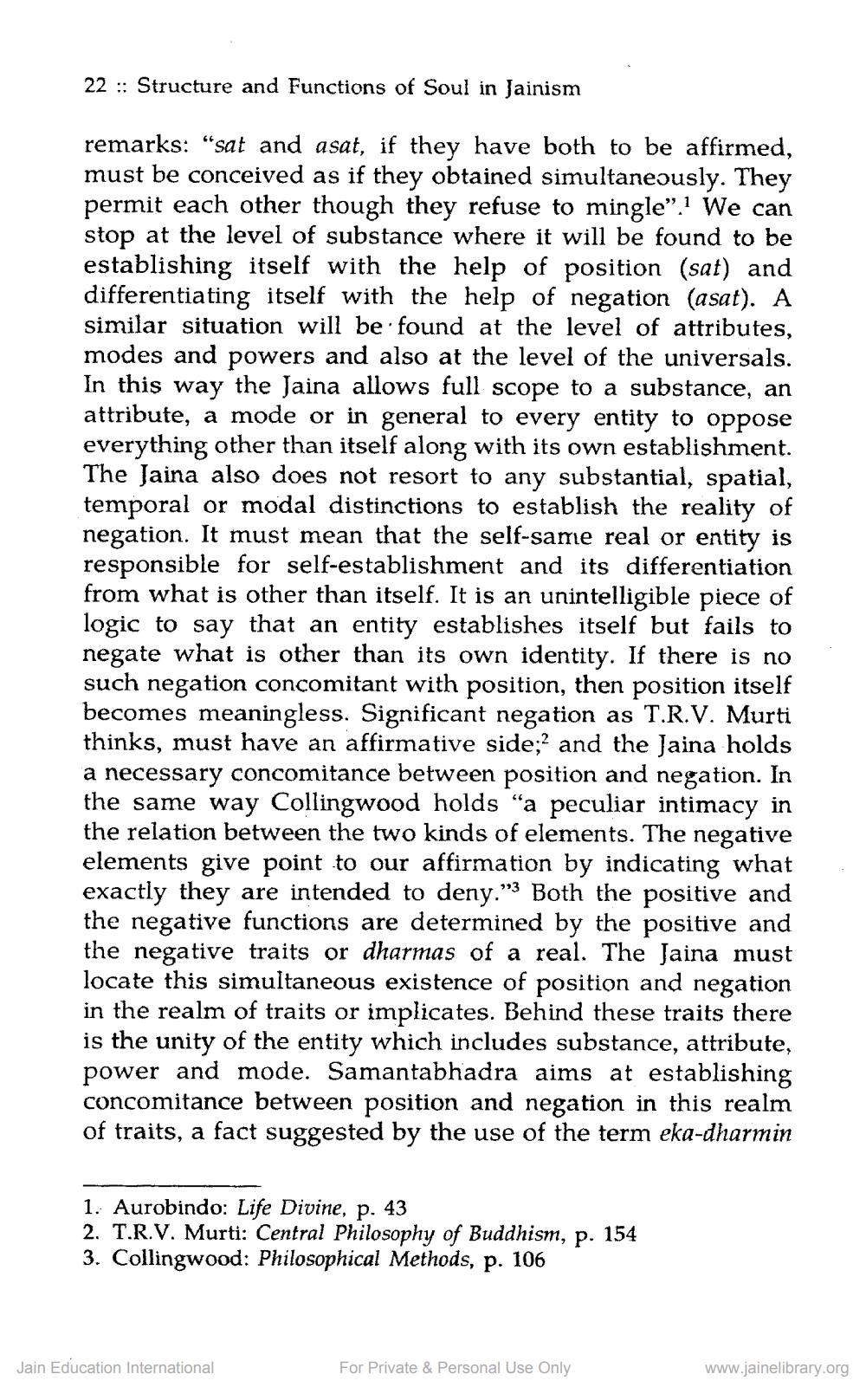________________
22: Structure and Functions of Soul in Jainism
remarks: "sat and asat, if they have both to be affirmed, must be conceived as if they obtained simultaneously. They permit each other though they refuse to mingle".1 We can stop at the level of substance where it will be found to be establishing itself with the help of position (sat) and differentiating itself with the help of negation (asat). A similar situation will be found at the level of attributes, modes and powers and also at the level of the universals. In this way the Jaina allows full scope to a substance, an attribute, a mode or in general to every entity to oppose everything other than itself along with its own establishment. The Jaina also does not resort to any substantial, spatial, temporal or modal distinctions to establish the reality of negation. It must mean that the self-same real or entity is responsible for self-establishment and its differentiation from what is other than itself. It is an unintelligible piece of logic to say that an entity establishes itself but fails to negate what is other than its own identity. If there is no such negation concomitant with position, then position itself becomes meaningless. Significant negation as T.R.V. Murti thinks, must have an affirmative side;2 and the Jaina holds a necessary concomitance between position and negation. In the same way Collingwood holds "a peculiar intimacy in the relation between the two kinds of elements. The negative elements give point to our affirmation by indicating what exactly they are intended to deny."3 Both the positive and the negative functions are determined by the positive and the negative traits or dharmas of a real. The Jaina must locate this simultaneous existence of position and negation in the realm of traits or implicates. Behind these traits there is the unity of the entity which includes substance, attribute, power and mode. Samantabhadra aims at establishing concomitance between position and negation in this realm of traits, a fact suggested by the use of the term eka-dharmin
1. Aurobindo: Life Divine, p. 43
2. T.R.V. Murti: Central Philosophy of Buddhism, p. 154
3. Collingwood: Philosophical Methods, p. 106
Jain Education International
For Private & Personal Use Only
www.jainelibrary.org




